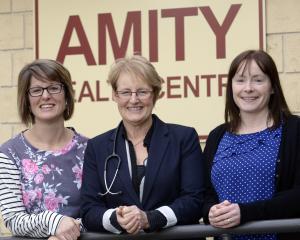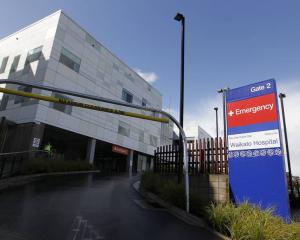A potentially controversial proposal which would involve bulk-funding of pharmacies as part of a plan to reduce the burgeoning drugs bill in Otago and Southland will be considered by an advisory committee of the two district health boards tomorrow.
The boards' community and public health advisory committee will be told that the community pharmaceuticals initiative (CPI) could save almost $9 million over three years in Otago, and about $3.75 million in Southland.
Savings would be distributed between the boards and participating primary health organisations (PHOs) and general practices and pharmacies.
However, since participation would be optional, savings would depend on the willingness of pharmacies and doctors to be involved.
No changes are proposed to the way people get prescriptions or pay fees to their doctors or pharmacies.
The project, which considered new funding models for community medicine spending, was sparked by concerns about the rising expenditure on subsidised medications dispensed from community pharmacies.
Some 11% of the Otago board's total health budget - $46.4 million last year - is spent on community pharmaceuticals, up more than $13 million since the 2005 year.
In Southland, the picture is similar - 2007 expenditure totalled $19.6 million compared with $14.6 million in 2005.
The Otago board's new regional funding and planning manager David Chrisp said community pharmacists, medical centres, PHOs and two health boards needed to work closely together to tackle wasteful practices and treatments that were not as effective as they could be.
This would involve curbing over-prescribing, unnecessary prescribing when another approach could be used, ensuring patients took medication properly so it was effective, reviewing patients using medication long-term, and considering the cost-effectiveness of prescriptions.
The proposal, which will be a national first if it proceeds to fruition in October 2009, was one of three options considered.
One, which would have had community pharmacies contracted directly by PHOs, was ruled out by the project team because it was considered that, although it met the requirements of the Government's primary health care strategy, it would breach Commerce Act restrictions over price fixing and anti-competitive behaviour.
Mr Chrisp said project staff found several factors contributed to increased spending on medicine, including the Government's lowering of fees for doctors' visits, the ageing population which needed more treatment, and an increased focus on preventive medicine.
Under the existing system, community pharmacies receive $5.16 plus GST for every subsidised item they dispense.
The project team described this as creating a perverse incentive for community pharmacies to focus on increasing the number of prescriptions, to ensure business viability.
Primary Health Organisations do receive an incentive payment under the existing system if they remain within a spending target on community medicine negotiated annually with the district health board.
Under the proposed system incentive payments would apply to participating PHOs, general practice teams and community pharmacies.
It is suggested the boards would get 40% of the savings, PHOs and general practice 30%, with the remaining 30% going to the pharmacies.











